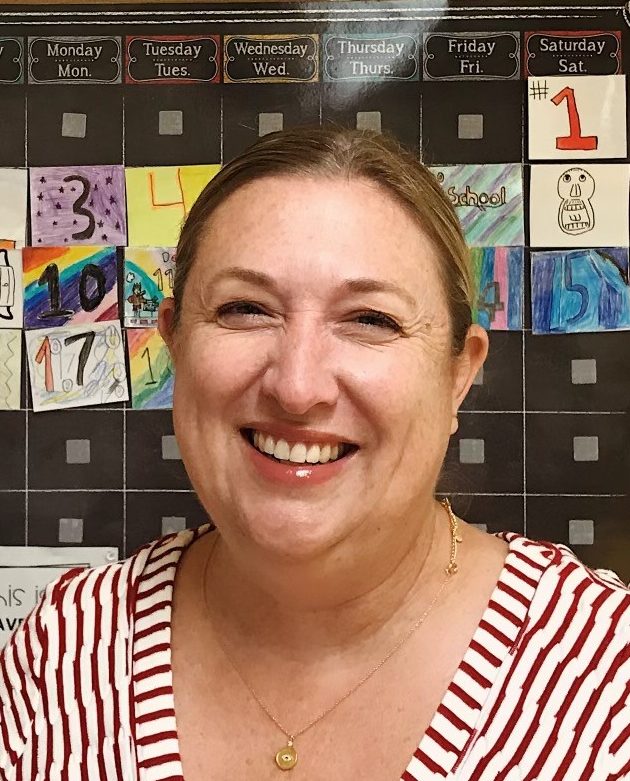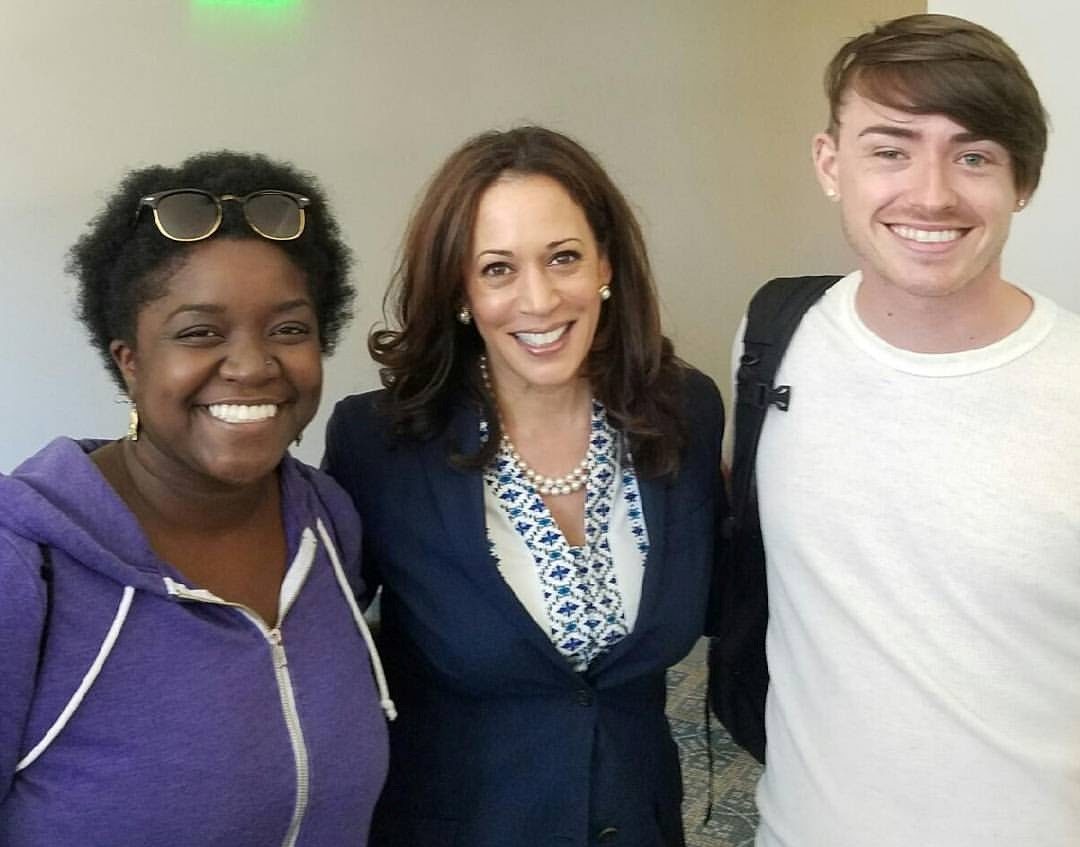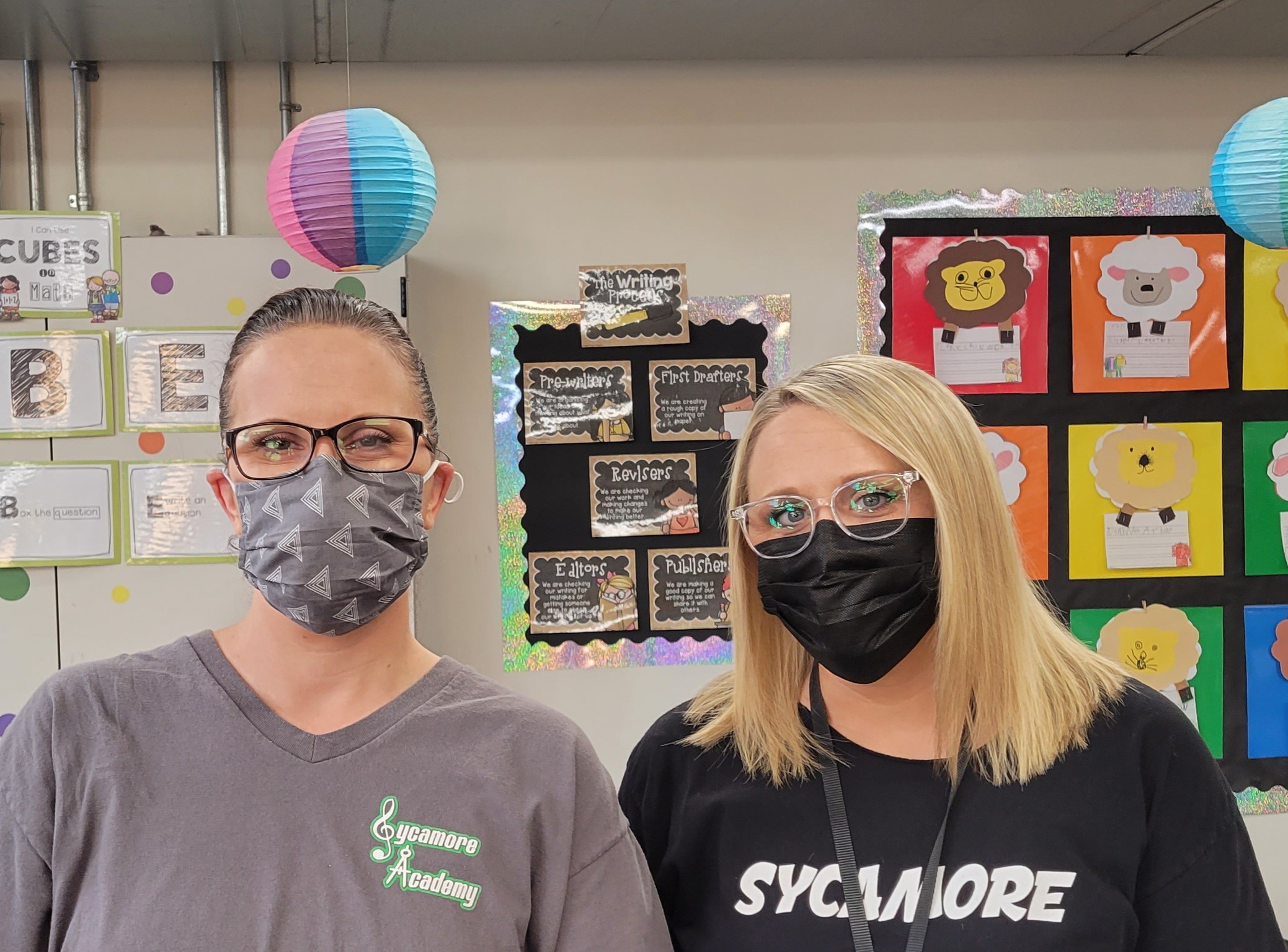
Illustration by Bob Venables
“My hope and dream for this union is to give teachers a voice so we can continue to build the passion in this organization.”
—Carol King, High Tech Education Collective
“It’s humanizing to have a voice, with people who share the same values and believe in teachers and education,” says ninth grade humanities educator Carol King. “That’s why having a voice is so important.”
In late April, King and about 400 of her colleagues at San Diego’s High Tech High charter school network organized High Tech Education Collective (HTEC), becoming the newest members of the CTA family and joining a growing list of charter educators who believe the best way to support their students and each other is in a union. Since the COVID-19 pandemic began in early 2020, educators have organized unions at seven charter school networks, affiliating with CTA to defend the health and safety of their school communities, protect and support their students, and rise together to fight for justice.

Carol King
“The last two years have shown us how much we need to transform society. We need radical imagination and collaboration,” says King, an educator for 12 years, the last eight at High Tech High. “A union makes a lot of sense moving forward to reimagine our schools, so we can build a better world.”
Nationwide, labor unions are experiencing a renaissance of support. A recent Gallup poll found 65 percent of Americans support unions, the highest level in more than 50 years. And an April Pew Research Center report shows that a majority of Americans believe that the historic decline of union membership (only 10.8 percent of American workers are union members today, down from 20 percent in 1983) has been bad for the United States.
Approximately 1,500 petitions for union representation were filed in 2020 with the National Labor Relations Board, including one by Amazon workers in Bessemer, Alabama, which made national headlines. Though their effort came up short, the workers showed that even in the heart of the South against one of the largest corporations in the world, the tide seems to be shifting. In late April, President Joe Biden created a White House Task Force on Worker Organizing and Empowerment, led by Vice President Kamala Harris and focused on increasing union membership, facilitating worker organizing nationwide, and increasing worker power in underserved communities.
“America was built by the middle class, and unions built the middle class,” Biden said in a statement. “The task force will be a historic effort to put the federal government’s policy of encouraging worker organizing and collective bargaining into action.”
‘A unique union for a unique school’
A lot has changed since High Tech High (HTH) public charter school opened in 2000 to serve 450 students. With 16 schools and 6,350 students on four campuses throughout San Diego County now, the charter school network is essentially a school district, according to Becky Frost, HTEC member and 19-year High Tech Explorer Elementary School educator. When all the school’s teachers could fit in a single room, their voices rang loudly, she says, but now many educators feel disconnected and left out of important decisions, especially related to the pandemic.

Becky Frost
“Teachers didn’t have a seat at the table like we used to,” Frost says. “It was harder to get our voices heard.”
When educators began organizing via Zoom earlier this year, they shared a lot of similar concerns, from high teacher turnover to the need for educator and student voices in decisions to the fear that HTH had strayed from its mission of equity that attracted so many of the teachers there in the first place.
“The pandemic really showed that the teachers didn’t have a voice in our organization. Our hope is that a union can get us closer to bringing equity to life,” says King. “This could, should and will be a unique union for a unique school. I see lots of opportunity for more collaboration that leads to better outcomes for students.”
Building power through unity
Two years ago, teachers at the largest charter school network in Oakland formed Coalition of Educators for Change (CEFC) to improve sustainability and build power to support their students and communities. With 175 teachers across six schools, CEFC finalized their first-ever contract during the pandemic, which includes language that gives teachers control over setting class sizes. CEFC President Victoria Albaracin says teachers immediately sought to help the Education Support Staff (ESS) organize — and not into a different union but as members of a “wall to wall” CEFC that represents all the network’s educators.

Victoria Albaracin (left) and teachers in Coalition of Educators for Change (CEFC) welcomed Paola Zamudio (right) and the charter network’s education support staff, who organized and joined the union last summer.
“This is what the labor movement is all about,” says Albaracin, a kindergarten teacher. “You can’t be truly unified unless everyone is included.”
Paola Zamudio works as a kindergarten tutor in the classroom with Albaracin. She says education support professionals have long been unrecognized, unseen and unheard, with working conditions only getting worse with the onset of the pandemic — and many staff feeling like they were disposable.
“A lot of us were ready to fight for change,” Zamudio says, “and so we did.”
Starting their organizing on Zoom in the early days of the pandemic, the educators set a two-month deadline so they could file for recognition by the end of the school year, a feat that seemed difficult to accomplish at the time. With an organizing team of eight and the support of their teacher colleagues, Zamudio and ESS organizers drove around their communities and collected signatures, safely and from a distance. She recounted watching a colleague who works as a custodian sign the union petition while his grandchildren watched, witnessing the memorable moment.
“It was a very powerful time,” Zamudio says excitedly. “We created a union during the pandemic — who would’ve thought that would happen?”
The ESS educators filed in June and were recognized in August 2020 — a monumental effort in such a short time, and one that increases CEFC to nearly 300 members.
“We were just a baby union two years ago. And to have expanded and given a voice to the voiceless is an honor,” Albaracin says. “My hope is we build a strong place that educators want to stay.”
Union busting is real
Not everyone is pleased with labor’s resurgence and an increase in empowered workers. Anti-union organizations like the Freedom Foundation and the Mackinac Center for Public Policy pour money into disinformation campaigns aimed at deceiving workers to leave their unions (see story “Who Wants You to Opt Out — and Why?”). Some charter management operators are notorious union busters, using any means necessary to scare, obstruct or otherwise prevent their educators from organizing a union.
Frost says that her current contract at High Tech High is year to year and at will. Being able to collectively bargain a contract is a big part of why she wanted a union. But it’s also why signing their names at the bottom of a union organizing letter can be cause for concern.

Diana Gonzalez
“It’s a scary thought,” says Diana Gonzalez, Spanish teacher and HTEC member. “But it’s not just about me. It’s for future colleagues and students. To have a union is going to positively impact their experiences. Even if I’m gone, the students will still benefit from the union.”
The question of “what if” went from a hypothetical to real life during the reporting of this story, when an HTEC organizing committee member was fired a day after being quoted in a San Diego area newspaper article on the unionizing effort. HTEC and CTA mobilized immediately, filing an unfair labor practice charge for the apparent retaliation and demanding the dedicated four-year teacher be reinstated.
“We believe it is our collective obligation as a union, as teachers, as peers, as High Tech High families, and as the larger educational community to protect the High Tech High teaching and learning community,” HTEC wrote in a petition to the HTH Board. “This means demonstrating our shared values by leveraging our collective power to correct this egregious act committed by HTH leadership.”
It’s a testament to how much these educators believe in each other and their students that they’re willing to put it all on the line for their union. King says that’s exactly what’s at the heart of HTEC: a belief in what’s possible for the students of High Tech High.
“I really think this union is forming out of love for this place,” King says.
Uniting for students, fighting for justice
Asha Hannah and Andy Marshall-Buselt have been teachers at Leadership Public Schools (LPS) in Oakland for seven years, which is also how long they have been working on organizing a union. In February, their work was finally realized when educators across three schools formed East Bay Educators United (EBEU), affiliating with CTA.

Asha Hannah (left) and Andy Marshall-Buselt at CTA Summer Institute in 2016 (with Kamala Harris, then California attorney general), long before they helped organize East Bay Educators United.
It is an effort that got a jolt of energy in 2019 when educators at LPS and other Oakland charter schools held a sympathy strike in conjunction with the Oakland Education Association strike.
Marshall-Buselt says the experience was transformational. “Having us help hold the line and be out there really meant a lot to our colleagues. It was a watershed moment for our staff. Ever since then, the way we look at our own rights has changed.”
Hannah says after hearing repeated tales of colleagues being disrespected and mistreated, it became apparent that educators needed a seat at the table. The top-down decision-making that often lost sight of student and educator needs only became more extreme when the pandemic hit, when it should have brought more collaboration. After years of disappointment, it felt like something was different this time — educators crowded the organizing meetings held via Zoom.
“A lot of things have been really affirming this year. I feel like I’ve been charged up,” Hannah says of EBEU’s unity in purpose. “It’s been a really wonderful experience to sit down and say ‘What do you need as an educator?’ and know those things are going to make the experience better for our students.”
Since its formation, EBEU was formally recognized by LPS and created a bargaining team, which has held forums to develop priorities for their first contract.
“It’s so exciting to go from an idea to a bargaining team,” Marshall-Buselt exclaims. “We did it! We’re doing it!”
Hannah says it’s been a rewarding experience to organize successfully and join the CTA family. “No one gave up on us. It’s been seven years and it finally happened. I feel grateful that CTA was there to support and walk us through the process.”

Beth Wilson and Wendy Lizardi are two of 43 Sycamore Academy of Science and Cultural Arts educators, who voted to affiliate with Lake Elsinore Teachers Association.
This sentiment is shared by the 43 educators at Sycamore Academy of Science and Cultural Arts (SASCA), who started organizing at sites in Wildomar and Chino last September and subsequently voted to affiliate with Lake Elsinore Teachers Association (LETA). SASCA educator and LETA member Wendy Lizardi had previously reached out to CTA about forming a union, and after COVID hit, it was obvious that the time was now, she says.
“The pandemic was the tipping point. The benefits of having a union outweighed everything else,” says Lizardi, a TK-1 teacher. “We could see it wasn’t going to get better on its own.”
SASCA educator Beth Wilson says CTA staff guided educators through the organizing process, identifying potential roadblocks and providing much-needed support.
“CTA is a well-oiled machine. They know exactly what they’re doing and they’re going to support us 100 percent,” says Wilson, also a LETA member. “It made it so much easier to get through all of this.”
Lizardi says educators wanted to have a voice and no longer be at-will employees. She hopes the union will be able to bring back the collaborative culture that made the school strong.
“We just want it to be a happy workplace for everyone,” she says. “Every year, I think it can’t get worse, and then I come in and get so frustrated. We’re tired of being treated certain ways, and we did it together.”
Frost at High Tech High says the union is a vehicle for positive change, a common theme for all these new educators unions. “We all love our schools. I wouldn’t put all this effort into organizing if I didn’t love where I work.”
Clovis Educators Launch Historic Organizing Effort
Following years of district decision-making that has excluded the needs of educators and classrooms as well as concerns that peaked during the pandemic, a large and diverse group of Clovis educators launched a petition drive in April to form a union.
The Association of Clovis Educators (ACE) began gathering signatures to build a union among the more than 2,100 teachers, school psychologists, itinerant specialists, school counselors and other educators in the Clovis Unified School District, just north of Fresno. ACE announced its plans to organize in a letter to the Clovis Unified community signed by dozens of educators from the district who belong to the ACE union organizing committee.
The petition will circulate until a majority of educators’ signatures have been gathered.
“Clovis educators and schools are known for their excellence, and we believe that to stay true to our district’s core values, forming a union is our next important step,” says Kristin Heimerdinger, a 28-year Clovis teacher. “Though many of our concerns have been building for years, a mismanaged school reopening during this pandemic has shown us that district decision-making is broken and does not value all students equally. Educators need a meaningful seat at the table, and we believe a union is the best way to ensure a strong future for our students and schools for years to come.”
Clovis Unified School District is one of the last large school districts in California without a union that represents educators. For more information about ACE, go to cloviseducators.org (#WeAreACE).
Welcome to the Family
CTA-affiliated associations organized during the COVID-19 pandemic:
- Coalition of Educators for Change Education Support Staff (Education for Change, Oakland)
- East Bay Educators United (Leadership Public Schools, Oakland)
- High Tech Education Collective (High Tech High, San Diego)
- Monterey Bay United (Monterey)
- Santa Rosa Academy/Menifee Teachers Association (Menifee)
- South Bay Educators United (Downtown College Prep, San Jose)
- Sycamore Academy of Science and Cultural Arts/Lake Elsinore Teachers Association (Wildomar, Chino)
- Yu Ming Educators Union (Oakland)